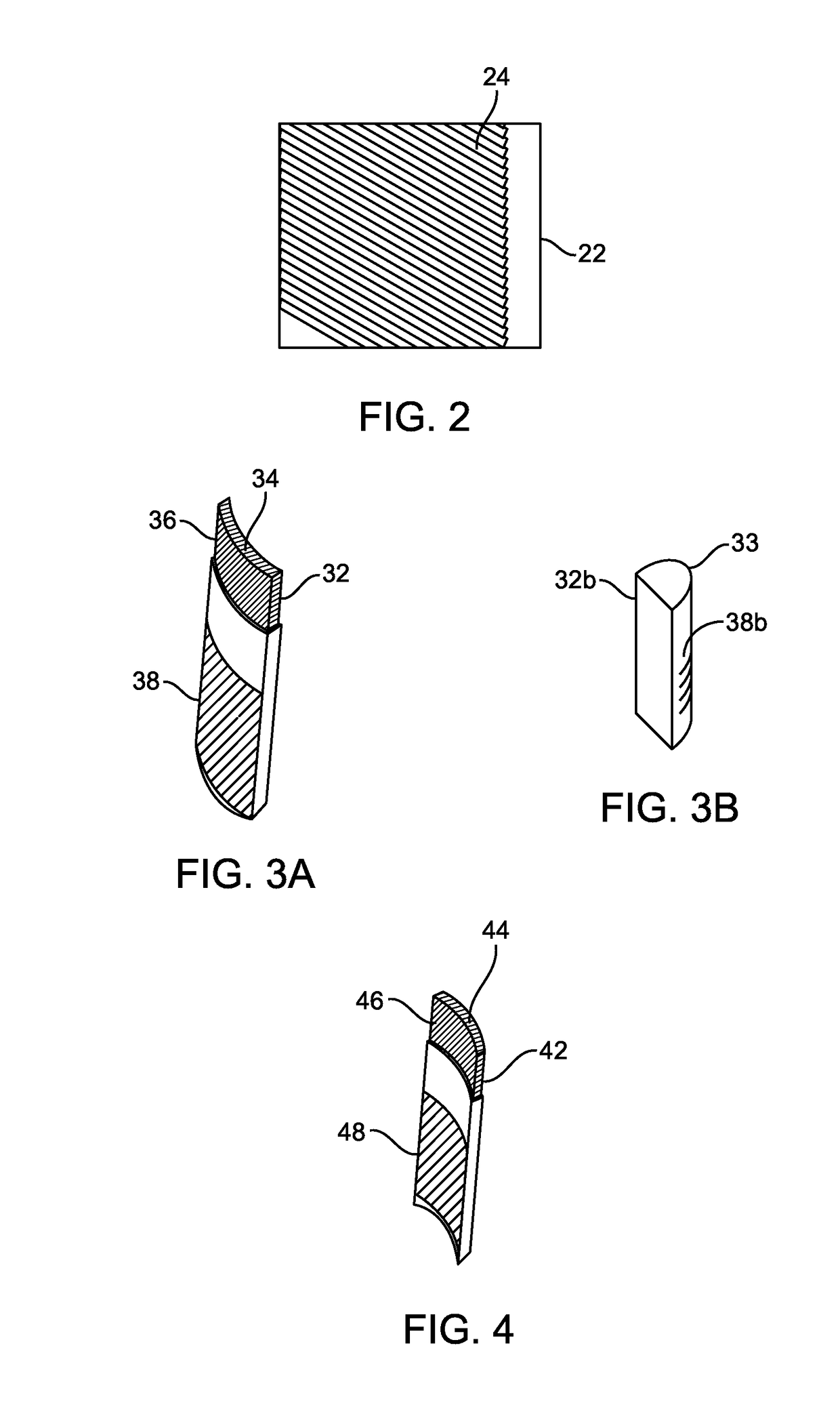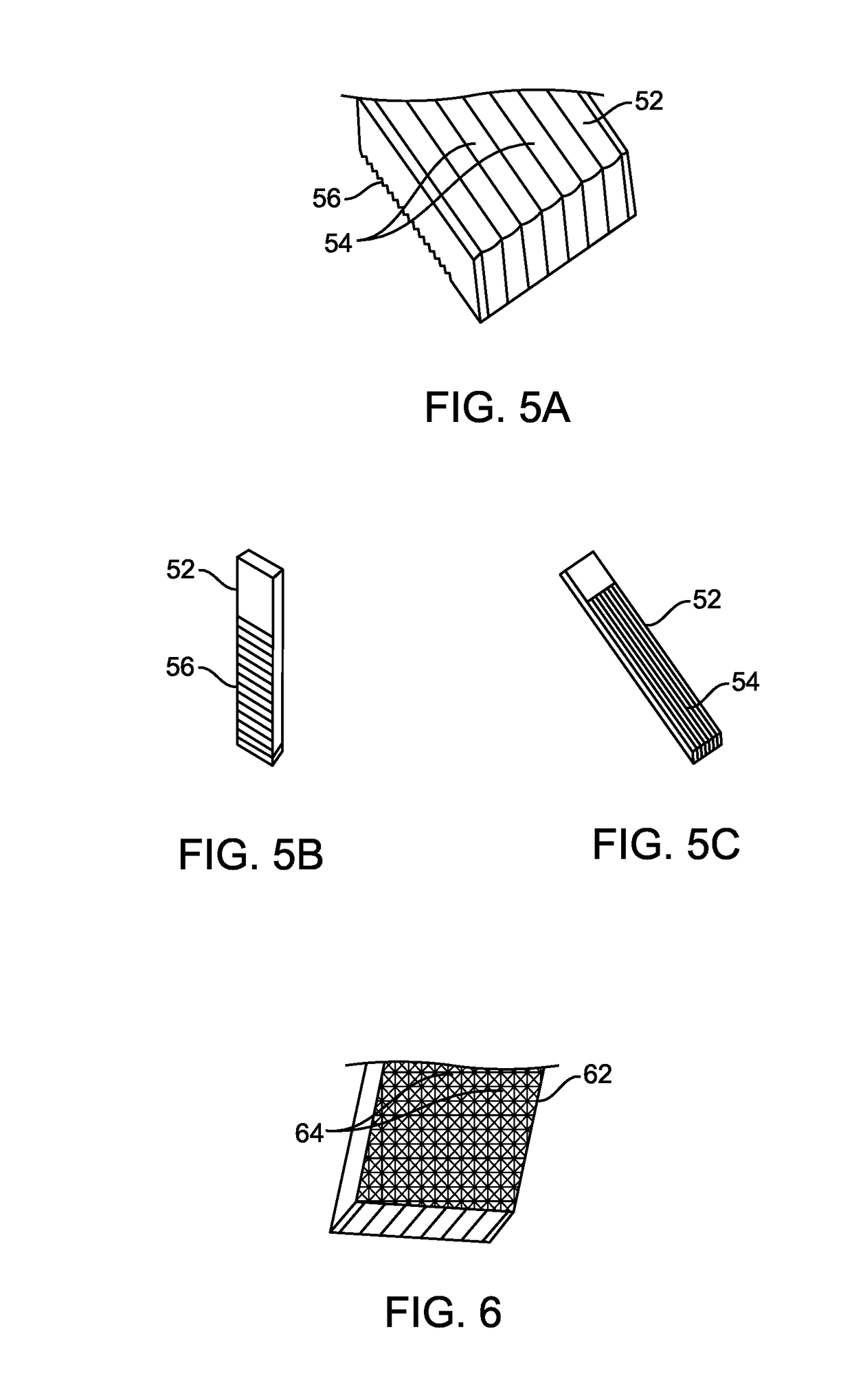Methods and apparatus for controlling optical properties of light
a technology of optical properties and methods, applied in the field of methods and apparatus for controlling optical properties of light, can solve the problems of unable to illuminate a target area, unable to accurately observe the target area, and still cast unwanted shadows in the target area, so as to reduce the kinking
- Summary
- Abstract
- Description
- Claims
- Application Information
AI Technical Summary
Benefits of technology
Problems solved by technology
Method used
Image
Examples
Embodiment Construction
[0060]Many illumination devices and systems provide little control of the light being outputted. For example, fiber optic cables typically only output light radially with a fixed angle from the distal fiber tip. Some optical waveguides deliver light more efficiently and can control light extraction and delivery more effectively such as the embodiment in FIG. 1A which illustrates extraction of light 16 from an optical waveguide 10. Light is input into the optical waveguide 10 typically with a fiber optic input 12 which can be coupled to an external light source. The waveguide includes prismatic surface features 14 on an outer surface of the waveguide. The prismatic surface features 14 extract light 16 from the waveguide 10 and direct the light 16 to a work area such as a surgical field or other target area. Prismatic surface features are described in greater detail in US Patent Publication Nos. 2009 / 0112068; 2009 / 0036744; 2008 / 0002426; 2007 / 0270653; 2007 / 0208226; and 2006 / 0268570; th...
PUM
 Login to View More
Login to View More Abstract
Description
Claims
Application Information
 Login to View More
Login to View More - R&D
- Intellectual Property
- Life Sciences
- Materials
- Tech Scout
- Unparalleled Data Quality
- Higher Quality Content
- 60% Fewer Hallucinations
Browse by: Latest US Patents, China's latest patents, Technical Efficacy Thesaurus, Application Domain, Technology Topic, Popular Technical Reports.
© 2025 PatSnap. All rights reserved.Legal|Privacy policy|Modern Slavery Act Transparency Statement|Sitemap|About US| Contact US: help@patsnap.com



